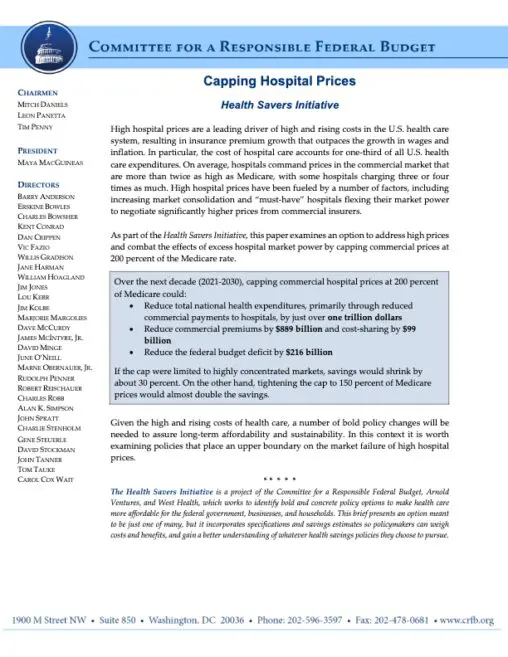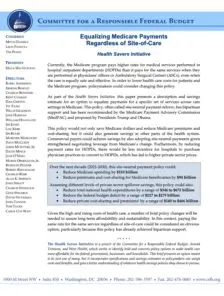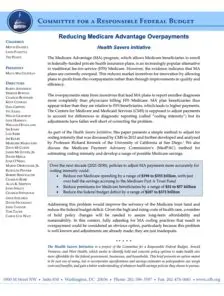Health Savers Initiative: Capping Hospital Prices
High hospital prices are a leading driver of high and rising costs in the U.S. health care system, resulting in insurance premium growth that outpaces the growth in wages and inflation. In particular, the cost of hospital care accounts for one-third of all U.S. health care expenditures. On average, hospitals command prices in the commercial market that are more than twice as high as Medicare, with some hospitals charging three or four times as much. High hospital prices have been fueled by a number of factors, including increasing market consolidation and “must-have” hospitals flexing their market power to negotiate significantly higher prices from commercial insurers.
As part of the Health Savers Initiative, this paper examines an option to address high prices and combat the effects of excess hospital market power by capping commercial prices at 200 percent of the Medicare rate.Given the high and rising costs of health care, a number of bold policy changes will be needed to assure long-term affordability and sustainability. In this context it is worth examining policies that place an upper boundary on the market failure of high hospital prices.
Given the high and rising costs of health care, a number of bold policy changes will be needed to assure long-term affordability and sustainability. In this context it is worth examining policies that place an upper boundary on the market failure of high hospital prices.





